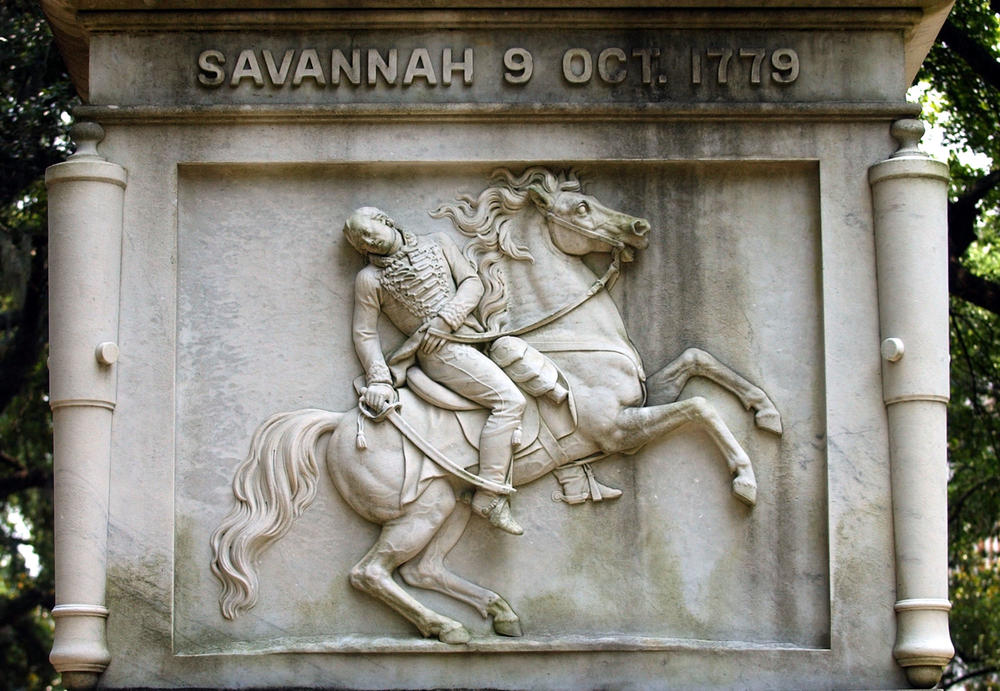Section Branding
Header Content
The 'Father Of The American Cavalry' And The Complexity Of Gender
Primary Content
The life of a Revolutionary War hero often called the "Father of the American Cavalry" may be a rare window into the complexities of gender.
Gen. Casimir Pulaski was a Polish nobleman who fought on the side of American colonists before dying in 1779 near Savannah. There had long been a monument to Pulaski with what were thought to be his remains buried in the base. Though, no one was ever 100% sure.
The "Father Of The American Cavalry" And A Window Into The Complexities Of Gender
By the 1990s, the monument was crumbling and had to be fixed. The remains of “probably Pulaski” were disinterred to make way for a new monument, with the hope that the question of their identity would be laid to rest before reburial.
Then, a mystery unfolded. Anthropologist Virginia Hutton Estabrook of Georgia Southern University was a part of the team that said the skeleton was unmistakably female. All you had to do was look at the pelvis to see.
“So, there's various pelvic differences between males and females that are mostly related to creating a little bit of extra within the birth canal zone,” Estabrook said. “You know, there's some range of variation always between individuals, but these look very, very female.”
Estabrook was part of the team that took up the task of figuring out first whether or not the skeleton was a Pulaski and then what the deal was with the female skeleton. Estabrook said, luckily, the original committee charged with unraveling the mystery had collected mitochondrial DNA. That’s genetic material that is passed from mother to offspring. Meanwhile in Poland....
“Pulaski's sister’s granddaughter was the closest maternal relative that they could find,” Estabrook said. If the skeleton was Casimir Pulaski, there should be genetic continuity between the this great great niece and the remains."
The continuity was there.
“That’s sort of conclusive evidence that these people were closely related,” Estabrook said. Which, in turn, was enough to say the skeleton was once Casimir Pulaski.
“According to the geneticist we are 99.98% certain,” Estabrook said.
Estabrook said that left the question of how Pulaski, never described in history as anything other than a man and usually depicted in art with a dark black moustache, was physically female? Estabrook said the easy conclusion misses the point.
“I've noticed on Facebook, even my anthropologist friends...they're like ‘Pulaski was a woman?’” Estabrook said. “I’m like ‘No, no, no, no....’”
Instead, Estabrook said Pulaski was likely intersex. That’s when a person develops physical traits of both men and women. It’s only because of the exhaustive historical record of Pulaski’s life as a man that Estabrook says she is comfortable saying the undeniably female skeleton was his. Which points out a fact about how intersex people show up in the archaeological record.
“We don't know what any intersex condition looks like skeletally,” Estabrook said.
Pulaski’s skeleton is a start in changing that. Estabrook said it makes a grand total of one known intersex skeleton in the archaeological record.


